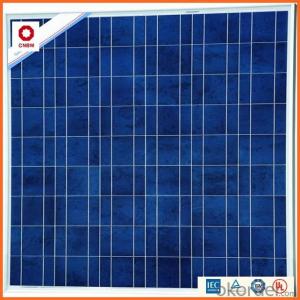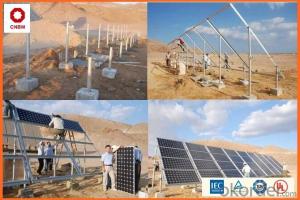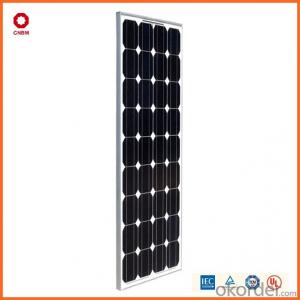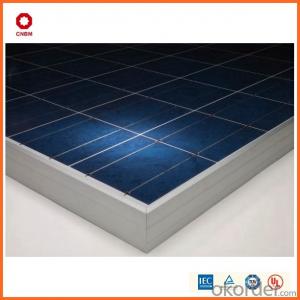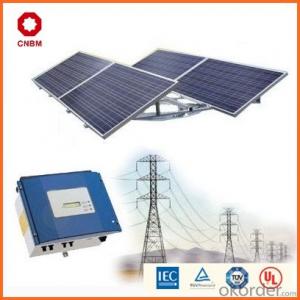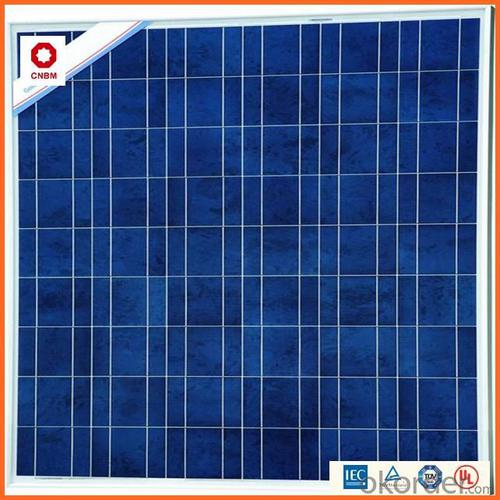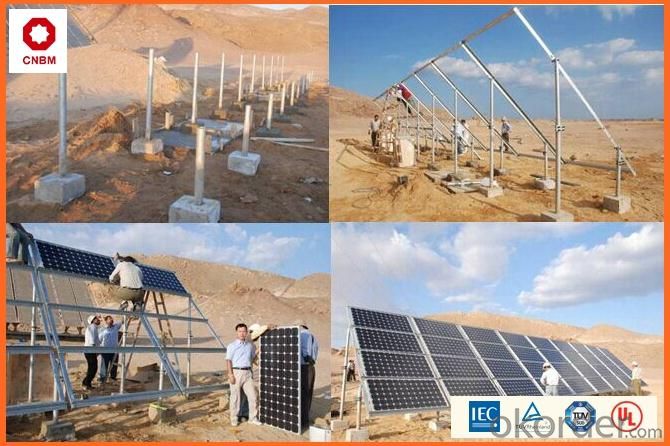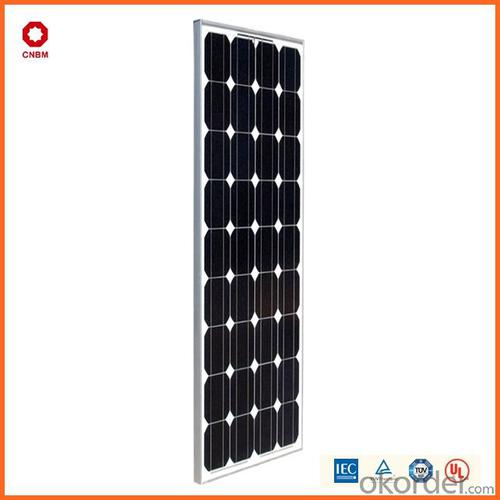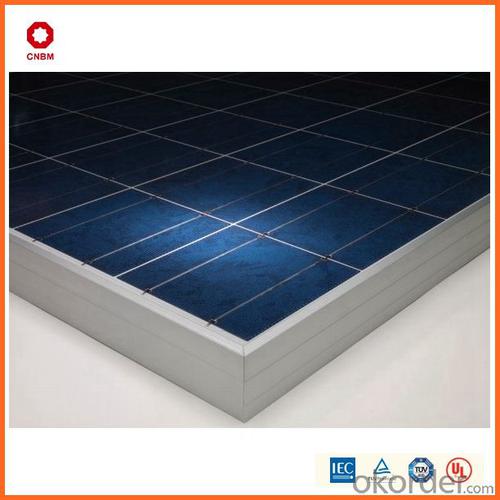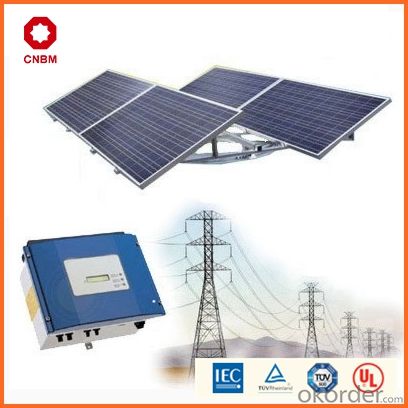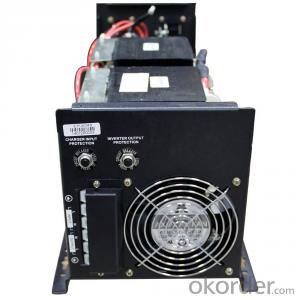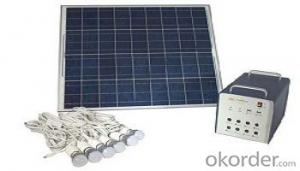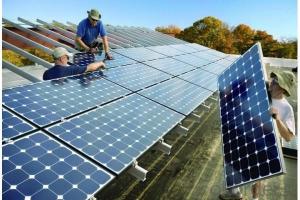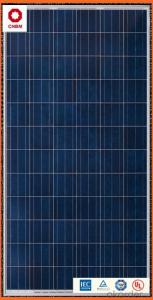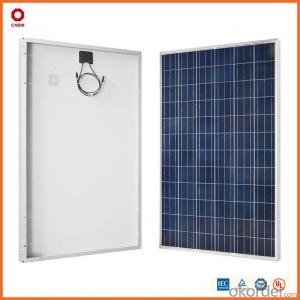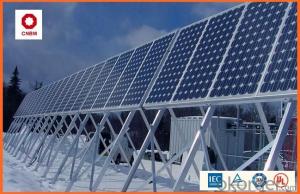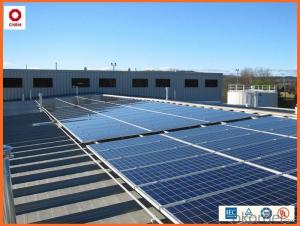General Solar Energy Systems 95w Small Solar Panels in Stock China Manufacturer
- Loading Port:
- China main port
- Payment Terms:
- TT OR LC
- Min Order Qty:
- 1 watt
- Supply Capability:
- 10000000 watt/month
OKorder Service Pledge
OKorder Financial Service
You Might Also Like
Specification
Product Description:
Hot Sale !!! Quality and Safety of Small Poly Solar Panel 5w~150w
1. Rigorous quality control meets the highest international standards.
2. High-transmissivity low-iron tempered glass, strong aluminium frame.
3. Using UV-resistant silicon.
4. IS09001/14001/CE/TUV/UL
Warranties of Small Poly Solar Panel 35~85w
1. 10 years limited product warranty
2. 15 years at 90% of the minimal rated power output
3. 25 years at 80% of the minimal rated power output
Specification
Characteristics of Poly solar panels CNBM (245-320W) | |||||
Max Power Voltage Vmp(V) | 30.3 | 30.8 | 31.1 | 31.4 | 31.85 |
Max Power Current Imp(A) | 7.60 | 7.64 | 7.73 | 7.81 | 7.85 |
Open Circuit Voltage Voc(V) | 36.1 | 36.6 | 37 | 37.3 | 37.68 |
Short Circuit Current Isc(A) | 8.50 | 8.55 | 8.65 | 8.75 | 8.85 |
Max Power Pm(W) | 230W | 235W | 240W | 245W | 250W |
Temperature Coefficient of Cells Poly solar panels CNBM (245-320W) | |
NOCT | 45± 2 |
Temperature Coeffucients of Isc | 0.0492 |
Temperature Coeffucients of Voc | -0.3374 |
Temperature Coeffucients of Voc | -0.4677 |
Mechanical Data of Poly solar panels CNBM (245-320W) | |
Dimension | 1638 × 982 × 40 mm |
Weight | 19.5 kg |
No. of Cells and Connections | 60 (6 ×10) |
Tolerance | 0 ~ + 5 W |
Cell | Monocrystalline Cell 156 × 156 mm |
Packing | 624 Pcs/40ft(H) Container |
Limits of Poly solar panels CNBM (245-320W) | |
Operating Temperature | -40 to +85 |
Storage Temperature | -40 to +85 |
Max System Voltage | 1000VDC(IEC) / 600VDC(UL) |
Features of our products:
• High conversion efficiency mono/poly-crystalline amorphous silicon solar cells
• Modules incorporate high performance bypass diodes to minimize the power drop caused by shading
• High transmittance, low-iron tempered glass
• High performance EVA encapsulant to prevent destroying and water.
• AI frame: without screw, corner connection. 8 holes on the frame can be installed easily
• Good performance of preventing from atrocious weather such as wind and hails
• Certifications: CE IEC TUV VDE UL, Class I
• 10 years 90% power output warranty
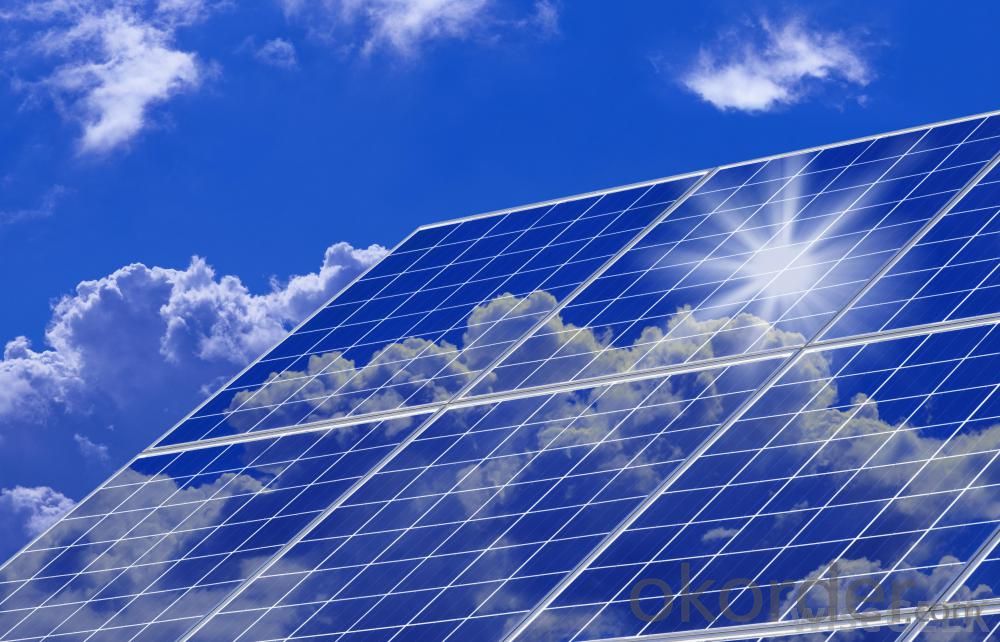
Shipping of Small Poly Solar Panel 35~85w
By Sea | Delivery from Shanghai or Ningbo seaport |
By Air | Departure from Shanghai Pudong Airport |
By Express | Post by DHL, EMS, UPS, TNT. |
Features of our products:
• High conversion efficiency mono/poly-crystalline amorphous silicon solar cells
• Modules incorporate high performance bypass diodes to minimize the power drop caused by shading
• High transmittance, low-iron tempered glass
• High performance EVA encapsulant to prevent destroying and water.
• AI frame: without screw, corner connection. 8 holes on the frame can be installed easily
• Good performance of preventing from atrocious weather such as wind and hails
• Certifications: CE IEC TUV VDE UL, Class I
• 10 years 90% power output warranty
As a professional Solar Panel manufacturer and Supplier in China, we have our customers come around the whole world and our specialization has got a worldwide recognition. Meanwhile, with our superior quality, competitive price, prompt and excellent service, As main role in trade section of CNBM Group, CNBM International Corporation supplies products including Monocrystalline Solar Panel, Polycrystalline Solar Panel ( multicrystalline silicon Solar Panel) have received and enjoyed famous reputation in many countries and regions in the world.
- Q: Can a solar energy system be used in areas with high humidity?
- Indeed, areas with high humidity can make use of a solar energy system. Although high humidity can have an impact on the functionality of a solar energy system to some degree, contemporary solar panels are engineered to endure diverse weather conditions, including high humidity. While the efficiency of solar panels may slightly decline in the presence of high humidity due to the moisture in the air, it is not a substantial factor that would render solar energy systems inefficient. Moreover, adequately maintaining and cleaning the panels can alleviate any possible problems caused by humidity. In conclusion, areas with high humidity can still effectively employ solar energy systems.
- Q: Can solar energy systems be used for powering financial institutions or banks?
- Yes, solar energy systems can be used to power financial institutions or banks. Solar power is a sustainable and renewable energy source that can help reduce electricity costs and carbon footprint for these institutions. With advancements in technology and decreasing costs of solar panels, many financial institutions are now adopting solar energy systems to meet their energy needs, promote environmental sustainability, and demonstrate their commitment to clean energy.
- Q: Can solar energy systems be used in areas with limited access to solar energy system financing options?
- Yes, solar energy systems can still be used in areas with limited access to solar energy system financing options. There are alternative financing options available such as leasing or power purchase agreements (PPAs) where the upfront costs are covered by a third-party provider. Additionally, there are government incentives and grants that can help offset the initial investment. In some cases, community solar programs or crowdfunding can also be utilized to make solar energy more accessible in areas with limited financing options.
- Q: Can solar energy systems be installed on commercial buildings?
- Yes, solar energy systems can be installed on commercial buildings.
- Q: Can solar energy systems be used in areas prone to earthquakes?
- Yes, solar energy systems can be used in areas prone to earthquakes. Solar panels are designed to withstand various weather conditions, including seismic events. Additionally, unlike traditional power infrastructure, solar energy systems are decentralized, reducing the risk of large-scale power outages during earthquakes. However, it is important to ensure proper installation and maintenance to ensure the resilience of solar energy systems in earthquake-prone areas.
- Q: How do solar batteries store excess energy?
- Solar batteries store excess energy by converting and storing it in chemical form. When the solar panels produce more energy than is needed, the excess energy is used to charge the batteries. This process involves converting the surplus electricity into chemical energy, typically through a chemical reaction. The stored energy can then be used later when the demand for electricity exceeds the amount being produced by the solar panels, such as during nighttime or cloudy days.
- Q: Can solar panels be installed on different surfaces like glass or metal?
- Yes, solar panels can be installed on different surfaces like glass or metal. In fact, solar panels are commonly installed on rooftops, which are often made of materials like glass, metal, or asphalt shingles. The most common type of solar panels, known as photovoltaic (PV) panels, are designed to be mounted on a variety of surfaces. The installation process involves securing the panels to the surface using racks or frames, ensuring that they are properly angled to maximize sunlight exposure. Whether it is a glass or metal surface, solar panels can be installed and effectively generate electricity from the sun's energy.
- Q: Can solar energy systems be used in areas with limited access to training programs?
- Yes, solar energy systems can be used in areas with limited access to training programs. Solar energy systems are designed to be user-friendly and can often be installed and operated without extensive technical knowledge or training. Additionally, there are numerous online resources and tutorials available that provide step-by-step guidance on installation, maintenance, and troubleshooting of solar energy systems. This allows individuals in areas with limited access to training programs to still benefit from the use of solar energy.
- Q: How do solar energy systems impact the reliability of electricity supply during blackouts?
- The reliability of electricity supply during blackouts can be positively influenced by solar energy systems. Homeowners and businesses can access electricity even when the grid goes down if they have a properly installed solar energy system. This is because solar panels generate electricity from sunlight, making them independent of the traditional power grid. When the sun is shining during the day, solar panels can produce electricity to meet the electrical needs of a home or business. Any excess energy generated can be stored in batteries for later use. This stored energy can then be utilized at night or during power outages, ensuring a reliable source of electricity when the grid is down. Furthermore, solar energy systems can be equipped with an inverter and a smart system that allows them to disconnect from the grid in the event of a blackout. This process, known as islanding, allows the solar panels to continue generating electricity for local consumption while isolating themselves from the main power grid. This feature guarantees that solar-powered homes and businesses can continue operating even during grid outages. The reliability of solar energy systems during blackouts depends on the size and capacity of the system, as well as the amount of energy stored in the batteries. Larger solar systems with ample battery storage can provide extended periods of electricity supply during blackouts, while smaller systems may only offer power for a limited time. It is worth noting that the reliability of solar energy systems during blackouts also relies on regular maintenance and inspections. Ensuring that the solar panels, batteries, and other components are functioning properly will optimize their performance during power outages. In conclusion, solar energy systems significantly enhance the reliability of electricity supply during blackouts. They provide a sustainable and independent source of electricity, reducing reliance on the grid and increasing resilience in the face of power disruptions.
- Q: Can solar energy systems be integrated with other energy sources?
- Integrating solar energy systems with other energy sources is a widely adopted approach in various applications to guarantee a dependable and steady provision of electricity. Given that solar energy is intermittent and reliant on sunlight availability, combining solar energy systems with alternative sources, such as batteries or the power grid, facilitates the storage of surplus energy generated during sunny periods and enables the provision of electricity during sunlight scarcity. A prevalent method of integration involves the use of hybrid systems, where solar panels are amalgamated with other renewable energy sources like wind or hydroelectric power. This integration allows for a more consistent and reliable energy supply since the different sources can compensate for fluctuations in one another. Moreover, solar energy systems can be integrated with traditional energy sources like natural gas or coal-based power plants. This integration contributes to the reduction of carbon emissions and aids in the shift towards a cleaner and more sustainable energy mix. By combining solar energy with other sources, the overall energy generation capacity is augmented, resulting in a more stable and secure energy supply. In conclusion, integrating solar energy systems with other energy sources is a pragmatic and efficient approach to maximize the advantages of renewable energy while ensuring a continuous and dependable electricity supply.
Send your message to us
General Solar Energy Systems 95w Small Solar Panels in Stock China Manufacturer
- Loading Port:
- China main port
- Payment Terms:
- TT OR LC
- Min Order Qty:
- 1 watt
- Supply Capability:
- 10000000 watt/month
OKorder Service Pledge
OKorder Financial Service
Similar products
Hot products
Hot Searches
Related keywords
